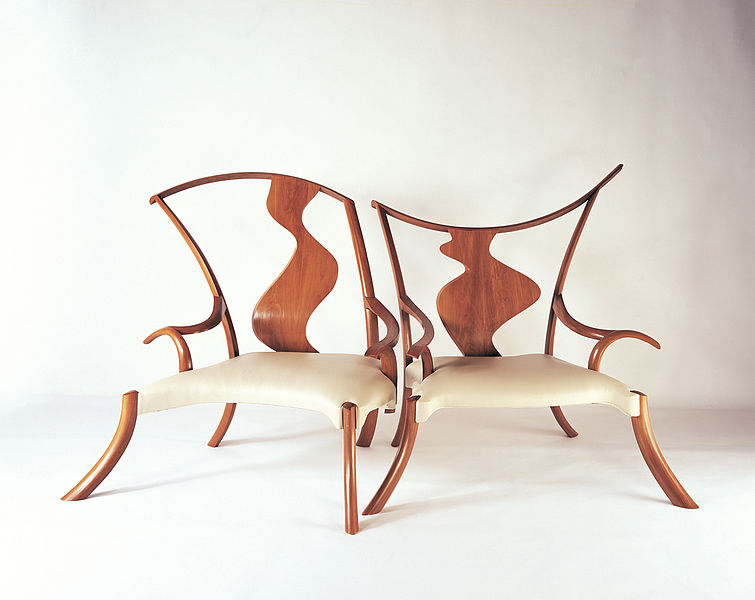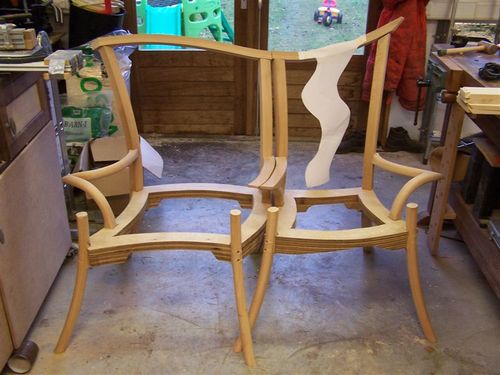AndyBoyd
Established Member
For a while now I have been making a copy of the David Savage Love Chairs IV

Here is where I'm at so far (paper cut out showing one of the back designs)

(lots more photos there is people are interested http://croeso.typepad.com/photos/furniture_making_love_cha/index.html)
I have been waiting for my large piece of London Plane to dry so I can make the chair backs. After 18months of drying I can start again!!!!
I will cut 2mm planks from the London plane which will then be cut to the curved shape, then glued in a vacuum bag to achieve the secondary curve to match the sitters back.
My question is: There is a very nice chamfer on each side, what will be the best way to cut that once the pieces come out of the vacuum bag?
A router seems best but how to guide it along a doubly curved piece is a bit of a challenge, As the chafer is also fully cut across the wood, a guide bearing is tricky to use as I guess I'll have to fix a temporary guide rail along the chair back but of course this is not straight but quite curvy in 2 dimensions.
I saw from the good woodworking article that David wrote on these chairs that he and his people used a spokeshave, but I'm afraid my spoke shave skills are not that good (never really mastered those tricky tools)
Any advice on how to do this would be very gratefully received
Andy
and a very merry christmas everyone

Here is where I'm at so far (paper cut out showing one of the back designs)

(lots more photos there is people are interested http://croeso.typepad.com/photos/furniture_making_love_cha/index.html)
I have been waiting for my large piece of London Plane to dry so I can make the chair backs. After 18months of drying I can start again!!!!
I will cut 2mm planks from the London plane which will then be cut to the curved shape, then glued in a vacuum bag to achieve the secondary curve to match the sitters back.
My question is: There is a very nice chamfer on each side, what will be the best way to cut that once the pieces come out of the vacuum bag?
A router seems best but how to guide it along a doubly curved piece is a bit of a challenge, As the chafer is also fully cut across the wood, a guide bearing is tricky to use as I guess I'll have to fix a temporary guide rail along the chair back but of course this is not straight but quite curvy in 2 dimensions.
I saw from the good woodworking article that David wrote on these chairs that he and his people used a spokeshave, but I'm afraid my spoke shave skills are not that good (never really mastered those tricky tools)
Any advice on how to do this would be very gratefully received
Andy
and a very merry christmas everyone
































